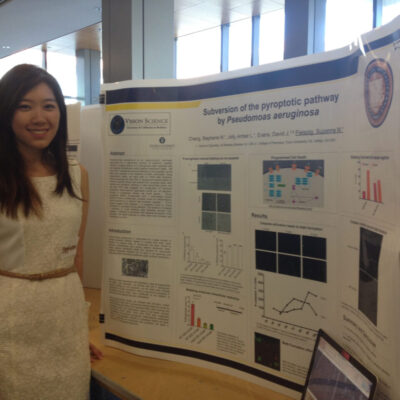Stephanie Chang Rose Hills
Pseudomonas aeruginosa Hijacks Cell Death Pathways
Pseudomonas aeruginosa is an opportunistic pathogen responsible for a significant number of antibiotic resistant infections. It can infect almost any site of the body, but typically targets damaged epithelial tissues such as corneas of contact lens wearers, potentially leading to blindness. P. aeruginosa uses a Type 3 Secretion System, a needle-like structure, to introduce bacterial exotoxins into host cells which can cause cell death. P. aeruginosa has also been found to replicate intracellularly and occupy protrusions in the plasma membrane known as blebs. Previous studies from the Fleiszig lab have shown that caspase 1, an enzyme that can induce pyroptotic cell death, plays a role in initiating bleb formation. We hypothesize that caspase 1 activity and the induction of pyroptosis is needed for bacterial intracellular survival and replication to occur.
Message To Sponsor
I am deeply grateful to the Rose Hills Foundation and the SURF program for allowing me to devote my full time and attention towards my research project in the Fleiszig lab over the summer. Through their generous support, I am able to continue and expand on the research completed for my senior honors thesis and aim for a future publication. I am thankful for the opportunity to work alongside brilliant researchers at UC Berkeley and contribute to the understanding of Pseudomonas aeruginosa.